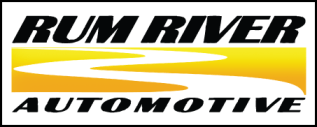Car Alignment Problems?
16
Dec,
2014
"Ouch! I've just hit a pothole!" We've all said those words after hitting a deceptively deep pothole hidden by a puddle of water. Is your car now pulling or drifting to the left or right, or is there too much "play" in the steering? By endeavoring to pinpoint tire problems, the candor, and castor of your front-end alignment, and taking your car for a road test, your auto mechanic can determine what kind of problem you are experiencing and then perform the right service, whether it's to correct the wheel alignment, or a tire rotation.
4 Steps to Diagnosing Steering Problems:
1. Eliminate tire problems. Before attempting to diagnose a wheel alignment problem, eliminate the possibility that your tires are the cause of steering problems:
- Make sure all four tires are inflated to the recommended pressure.
- Check to see that the tread and tire size are the same on both front wheels. Don't drive with a snow tire on one side and a normal highway tire on the other side.
- Check for unusual tread wear or damaged tires. A good time is when you have a tire rotation or the air pressure checked.
2. Examine your front-end alignment. There are different aspects to front-end alignments for rear-wheel drive vehicles:
- Toe-in. The front of each tire, when driving straight, points slightly to the centerline of the vehicle. This gives an advantage when cornering so each tire has equal traction (bite), but if it is angled inward too much, the OUTSIDE of the tire's tread wears more quickly.
- Castor. This is the vertices angle of the centerline of the tire from front to back. Unless the ball joints, control arm bushings, or kingpins are seriously worn, the castor doesn't vary too much.
- Camber. This is the vertical angle of the centerline of the tire perpendicular to the cross-section of your car.
3. Road test. While driving on a flat, level, smooth highway, on a dry and calm day, perform the following tests:
- Loosen your grip on the steering wheel enough to let the car proceed on its own. If the car pulls to the left or the right, you may need a wheel alignment.
- Listen for sounds from the front end of the car while driving slowly. Scraping, whining, or grinding sounds may indicate excessive friction as the tire tread rubs against the road.
- Have someone follow you to observe the front to back wheel alignment. If the front wheels are not tracking in the same groove as the back, you may have a bent frame.
4. Abnormal tread wear. Besides a car alignment problem, there are also other causes of unusual tire wear, including.
- Worn struts or shock absorbers.
- Worn out or loose wheel bearings.
- Worn or damaged tie-rod ends, ball joints, upper and lower control arm bushings, and other steering components.
- A worn or damaged steering gearbox.
- Poor driving habits—uneven distribution of heavy loads, hard cornering, braking, or swerving.
Important Tip: After you have had your front end checked and realigned, repeat the tests above to make sure the car alignment has been done correctly.
Wondering if you need a wheel alignment? Contact our ASE Certified Technicians at Rum River Automotive by calling (763) 389-3811, or go online at https://www.rumriverauto.com/ for more information about our car alignment service. Since 1997, our auto shop has served vehicle owners in Princeton, MN and in the surrounding areas of Milaca, MN, and Zimmerman, MN.
.
Facing Car Alignment Problems? There are several ways to take care of wheel alignment problems, then Visit us at Rum River Automotive shop."Ouch! I've just hit a pothole!" We've all said those words after hitting a deceptively deep pothole hidden by a puddle of water. Is your car now pulling or drifting to the left or right, or is there too much "play" in the steering? By endeavoring to pinpoint tire problems, the candor, and castor of your front-end alignment, and taking your car for a road test, your auto mechanic can determine what kind of problem you are experiencing and then perform the right service, whether it's to correct the wheel alignment, or a tire rotation.
4 Steps to Diagnosing Steering Problems:
1. Eliminate tire problems. Before attempting to diagnose a wheel alignment problem, eliminate the possibility that your tires are the cause of steering problems:
- Make sure all four tires are inflated to the recommended pressure.
- Check to see that the tread and tire size are the same on both front wheels. Don't drive with a snow tire on one side and a normal highway tire on the other side.
- Check for unusual tread wear or damaged tires. A good time is when you have a tire rotation or the air pressure checked.
2. Examine your front-end alignment. There are different aspects to front-end alignments for rear-wheel drive vehicles:
- Toe-in. The front of each tire, when driving straight, points slightly to the centerline of the vehicle. This gives an advantage when cornering so each tire has equal traction (bite), but if it is angled inward too much, the OUTSIDE of the tire's tread wears more quickly.
- Castor. This is the vertices angle of the centerline of the tire from front to back. Unless the ball joints, control arm bushings, or kingpins are seriously worn, the castor doesn't vary too much.
- Camber. This is the vertical angle of the centerline of the tire perpendicular to the cross-section of your car.
3. Road test. While driving on a flat, level, smooth highway, on a dry and calm day, perform the following tests:
- Loosen your grip on the steering wheel enough to let the car proceed on its own. If the car pulls to the left or the right, you may need a wheel alignment.
- Listen for sounds from the front end of the car while driving slowly. Scraping, whining, or grinding sounds may indicate excessive friction as the tire tread rubs against the road.
- Have someone follow you to observe the front to back wheel alignment. If the front wheels are not tracking in the same groove as the back, you may have a bent frame.
4. Abnormal tread wear. Besides a car alignment problem, there are also other causes of unusual tire wear, including.
- Worn struts or shock absorbers.
- Worn out or loose wheel bearings.
- Worn or damaged tie-rod ends, ball joints, upper and lower control arm bushings, and other steering components.
- A worn or damaged steering gearbox.
- Poor driving habits—uneven distribution of heavy loads, hard cornering, braking, or swerving.
Important Tip: After you have had your front end checked and realigned, repeat the tests above to make sure the car alignment has been done correctly.
Wondering if you need a wheel alignment? Contact our ASE Certified Technicians at Rum River Automotive by calling (763) 389-3811, or go online at https://www.rumriverauto.com/ for more information about our car alignment service. Since 1997, our auto shop has served vehicle owners in Princeton, MN and in the surrounding areas of Milaca, MN, and Zimmerman, MN.
.
Troy Minske
Troy Minske 



